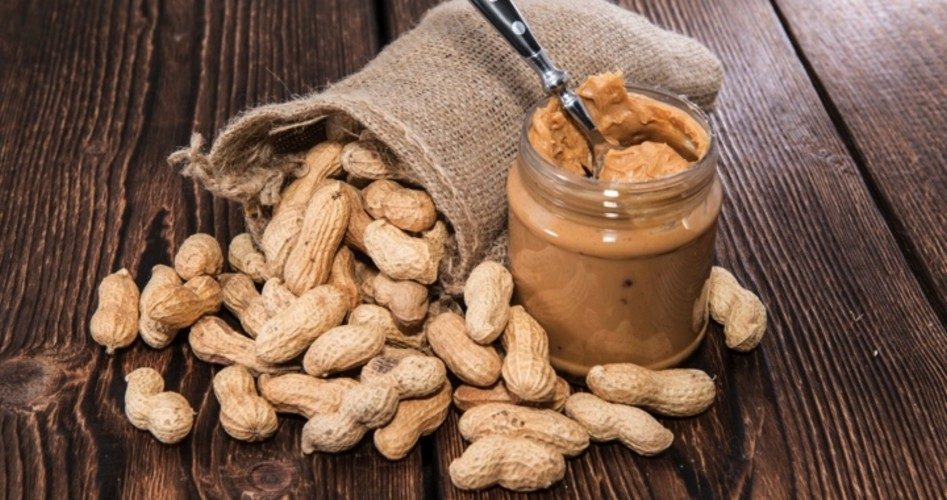
Two billion dollars may be peanuts to Uncle Sam, but to taxpayers that’s real money — money they’re going to have to shell out over the next three years to peanut farmers who have overproduced.
“Peanut growers in states including Georgia and Alabama boosted sowing acreage by a fifth this spring and now are wrapping up harvesting their 3.1-million-ton crop, the second-largest ever, even as prices plumb seven-year lows,” reported Reuters.
The good news for these farmers is that they can profit from their seemingly poor planting judgment in two ways — which may, in fact, be the reason they have been overplanting peanuts in the first place.
First, under the 2014 Farm Bill, the federal government will pay them most of the difference between a statutory “reference price” and the actual market price. The law set reference prices for a variety of commodities, but rice and peanuts — no doubt thanks to lobbying by their producers — got highly preferential treatment. For peanuts, the reference price is $535 per ton; had its reference price been calculated under the formula used for most other commodities, the price would be just $283 per ton, according to the Heritage Foundation.
With the reference price set so high, it would be almost impossible for peanut farmers not to make out like bandits. Senator Pat Roberts (R-Kan.), then the ranking member of the Senate Agriculture Committee and today its chairman, told the Kansas Ag Network in 2013 that Congress was “essentially guaranteeing that a farmer profits if yields are average or above average.” Or, as Heritage put it, “farmers would be winning the lottery at the expense of taxpayers.”
The current market price of peanuts is below $400 a ton, so for every ton of peanuts a farmer harvests, he can collect over $100 from the U.S. Department of Agriculture (USDA). “A Nov. 18 report to Congress estimates such payments this year for peanuts exceed those for corn and soybeans by more than $100 per acre,” wrote Reuters. And those crops are getting plenty of tax dollars themselves, with corn subsidies alone expected to cost $3.6 billion this year, according to the Congressional Budget Office (CBO).
Peanut farmers can also profit from overproduction via a loan-guarantee program enacted as part of the 2002 Farm Bill. At harvest, a farmer can take out a loan on his crop at a specified rate (currently $355 per ton). The farmer may repay the loan plus interest at any time during the next nine months that the weekly posted price for peanuts as determined by the USDA is at or above the loan rate. But — and here’s where the profit-making opportunities arise — if the posted price drops below the loan rate, the farmer has the option of repaying the principal at the lower price, with interest waived. (The farmer can even collect the difference between a loan at the statutory rate and one at a lower posted price without actually getting a loan by requesting a “loan deficiency payment.”) In addition, a farmer may at any time default on his loan, keeping the cash while forfeiting his crop to the USDA, which then must store or sell the peanuts — an attractive option when peanut prices are below or even slightly above the loan rate because it offloads the cost of storage onto taxpayers.
All told, peanut farmers are expected to rake in $960 million to $1.9 billion from Washington through fiscal 2018, according to CBO and USDA projections.
The nuts in Washington, meanwhile, will be stuck with all the nuts that farmers forfeited.
“In a severely depressed market, USDA might have difficulty finding a buyer without offering a deep discount, which would result in large net outlays for the government,” an August Congressional Research Service report noted. “The Department could wait for a price recovery but doing so would result in additional storage charges. Sufficient storage capacity might also be an issue if stocks increase substantially.”
Reuters found that theUSDA now has 145,000 tons of forfeited peanuts from last year’s crop in storage — “enough to satisfy the average annual consumption of over 20 million Americans.” Furthermore, “As peanut carryover inventories are forecast to hit a record of 1.4 million tons by end-July 2016 and as loans begin to come due next summer, farmers are expected to fork over more peanuts to the USDA.”
The problem for both the government and producers is what to do with the peanut glut. There doesn’t appear to be much room for growth in U.S. peanut consumption; Bob Parker, president and chief executive officer of the National Peanut Board, told Reuters that peanut butter is already a staple in 94 percent of American homes. The only real option, therefore, is to export the nuts. Parker said he’s been on two trade missions to China, a market over eight times the size of the U.S. market.
Of course, the best way to solve the problem is to get the federal government out of the business of subsidizing crops, which it has no constitutional authority to do in the first place. Absent this intervention, the “invisible hand” of the free market would align supply and demand, preventing long-term surpluses or shortages. Farmers would then plant the proper amount of each crop to meet people’s needs rather than politicians’ and lobbyists’ desires, and taxpayers would no longer be on the hook for billions of dollars in subsidies and loans to mitigate market distortions those very programs have caused. Getting farmers and the politicians who depend on their votes to accept these terms will be a tough nut to crack, but it’s the only moral and constitutional solution to the peanut predicament.



